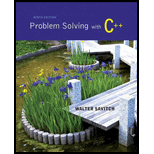
This
The field of information retrieval is concerned with finding relevant electronic documents based upon a query. For example, given a group of keywords (the query), a search engine retrieves Web pages (documents)and displays them sorted by relevance to the query. This technology requires a way to compare a document with the query to see which is most relevant to the query.
A simple way to make this comparison is to compute the binary cosine coefficient. The coefficient is a value between 0 and 1, where 1 indicates that the query is very similar to the document and 0 indicates that the query has no keywords in common with the document. This approach treats each document as a set of words. For example, given the following sample document:
“Chocolate ice cream, chocolate milk, and chocolate bars are delicious.” This document would be parsed into keywords where case is ignored and punctuation discarded and turned into the set containing the words {chocolate, ice, cream, milk, and, bars, are, delicious}. An identical processis performed on the query to turn it into a set of strings. Once we have a query Q represented as a set of words and a document D represented as a set of words, the similarity between Q and D is computed by:
Sim=| Q∩D || Q | | D |
Modify the StringSet from Programming Project 12 by adding an additional member function that computes the similarity between the current StringSet and an input parameter of type StringSet. The sqrt function is in the cmath library.
Create two text files on your disk named Document1.txt and Document2.txt. Write some text content of your choice in each file, but make sure that each file contains different content. Next, write a program that allows the user to input from the keyboard a set of strings that represents a query. The program should then compare the query to both text files on the disk and output the similarity to each one using the binary cosine coefficient. Test your program with different queries to see if the similarity metric is working correctly.
Want to see the full answer?
Check out a sample textbook solution
Chapter 11 Solutions
Problem Solving with C++ (9th Edition)
Additional Engineering Textbook Solutions
Starting Out with Programming Logic and Design (5th Edition) (What's New in Computer Science)
Database Concepts (8th Edition)
Modern Database Management
Java: An Introduction to Problem Solving and Programming (8th Edition)
Electric Circuits. (11th Edition)
Thinking Like an Engineer: An Active Learning Approach (4th Edition)
 C++ Programming: From Problem Analysis to Program...Computer ScienceISBN:9781337102087Author:D. S. MalikPublisher:Cengage Learning
C++ Programming: From Problem Analysis to Program...Computer ScienceISBN:9781337102087Author:D. S. MalikPublisher:Cengage Learning C++ for Engineers and ScientistsComputer ScienceISBN:9781133187844Author:Bronson, Gary J.Publisher:Course Technology Ptr
C++ for Engineers and ScientistsComputer ScienceISBN:9781133187844Author:Bronson, Gary J.Publisher:Course Technology Ptr New Perspectives on HTML5, CSS3, and JavaScriptComputer ScienceISBN:9781305503922Author:Patrick M. CareyPublisher:Cengage Learning
New Perspectives on HTML5, CSS3, and JavaScriptComputer ScienceISBN:9781305503922Author:Patrick M. CareyPublisher:Cengage Learning- Programming Logic & Design ComprehensiveComputer ScienceISBN:9781337669405Author:FARRELLPublisher:Cengage
 EBK JAVA PROGRAMMINGComputer ScienceISBN:9781337671385Author:FARRELLPublisher:CENGAGE LEARNING - CONSIGNMENT
EBK JAVA PROGRAMMINGComputer ScienceISBN:9781337671385Author:FARRELLPublisher:CENGAGE LEARNING - CONSIGNMENT Microsoft Visual C#Computer ScienceISBN:9781337102100Author:Joyce, Farrell.Publisher:Cengage Learning,
Microsoft Visual C#Computer ScienceISBN:9781337102100Author:Joyce, Farrell.Publisher:Cengage Learning,





